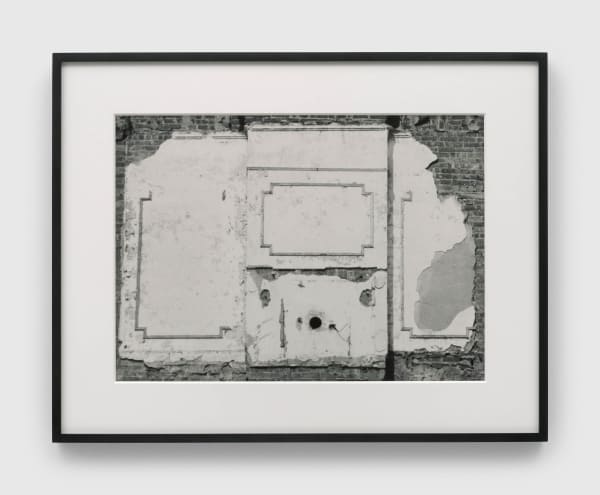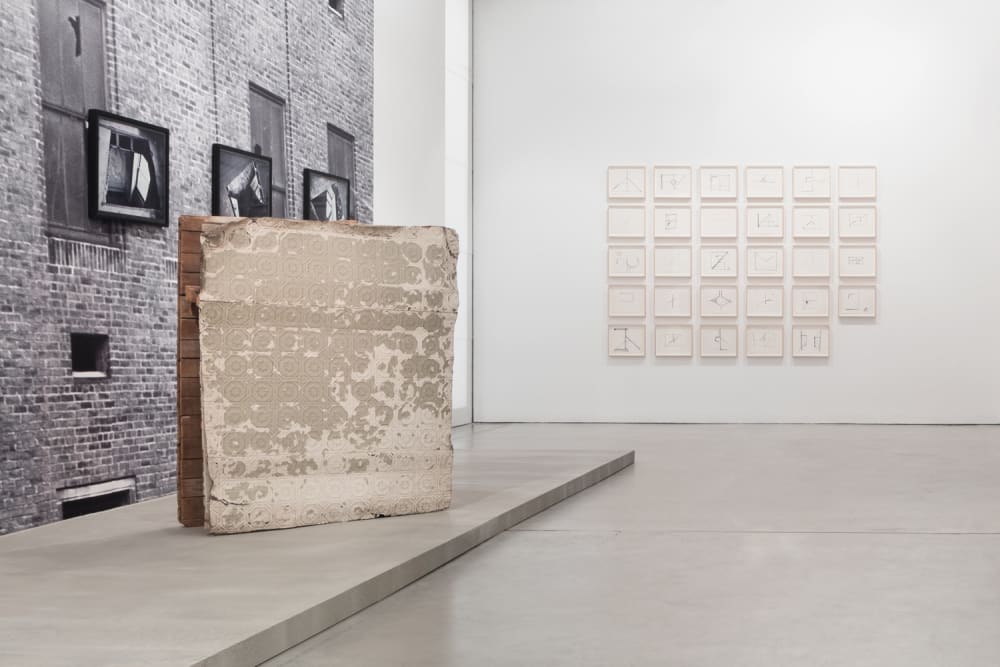(Ex)Urban Futures of the Recent Past, curated by David Hartt: Gordon Matta-Clark
-
介绍
Galerie Thomas Schulte presents (Ex)Urban Futures of the Recent Past, an exhibition of films and photographs by Gordon Matta-Clark, at the gallery’s space in Mercator Höfe. Curated by David Hartt, the exhibition engages with critical histories of and experimental approaches to urban space, from a period defined by sweeping transformations that continue to structure the built environment today.
With an added suggestion of something that no longer is, (Ex)Urban Futures of the Recent Past is a slight modification of the subtitle of the book Megastructure (1976)by Reyner Banham. Banham’s book is a critique of the megastructural movement, the strategies of which were assumed by and gave way to the capitalist restructuration and private development of the 1970s. It refers to a fleeting moment of optimism around the utopian potential of large-scale urban initiatives, in contrast to which Matta-Clark’s more fragmentary approach to city reinvention took shape – as both responded to urban infrastructural decline.
The black-and-white photographs from Matta-Clark’s series Walls (1972)installed throughout the exhibition are marked by the economic collapse and severe urban decay of the time, depicting abandoned buildings in the South Bronx. In cropped, straight-forward views of wall segments, layers peel back and internal structures are broken down and laid bare. They refer to exposure, or to being exposed: from the demolition process to the camera that preserves this state while underscoring its ephemerality. Their cracked surfaces are split into sections by columns or framed by remnants of decorative moldings that recall floor plans at times, while drifting into abstract stratification at others. The aesthetic of decay is experienced as a process of fading, as well as encroachment. Even though seemingly emptied out, human presence can still be felt: in one photograph, the shape of a void left by a break in a window is vaguely reminiscent of a silhouette.
Enlivened by human activity and movement, Matta-Clark’s films are projected onto drywall constructions that both partition and open up the space through large mirrors attached to their reverse sides. In one film, Automation House (1972), Matta-Clark’s own use of mirrors alters the perception, functionality and understanding of a space – undoing its architectural logic and coherence. Bodies are fragmented or vanish past the edge of an invisible boundary, reemerging on screen in seemingly impossible continuities that make everyday navigations and cohabitations more difficult to decipher. Framings through windows and doors, along with interactions of shadows and reflections, further destabilize the space – its comings and goings, ins and outs, and the relationships within it, including those between bodies and their movements.
The splitting of a consistent point of view is extended in the experimental film City Slivers (1976). With the narrow, vertical structure of its images, the film echoes the architecture and fragmented views of Midtown Manhattan that appear in some shots. A moving collage of the city, disjointed perspectives are seen in parallel, as well as through double exposures and layering. Moments of bustling activity are juxtaposed with a lack of visibility in overexposed or blacked out segments – offering glimpses of the city as though through a door’s jamb as it sways between open and closed. Tightly framed sequences of day-to-day motions, such as going through a revolving door, are interjected with panoptical views from atop the World Trade Center. From this vertiginous standpoint that no longer exists, and from which the movement and life below get overlooked, the limits of the body and those of the city are called into question.
In Open House (1972), perspectives on and relationships to urban space are narrowed in focus. The silent film revolves around a spatial construction of discarded doors and pieces of wood inside of an industrial waste container, which Matta-Clark installed on Greene Street in the New York neighborhood of SoHo – a former industrial area in which artists were claiming space at the time. On the occasion of its opening, the structure is activated through a performance by the artist and a group of friends. We see close-up, dizzying shots of the divided interior and the traces of its construction. Doors are repeatedly opened and closed – no matter which is passed through, the occupants are always both inside and outside. The container’s layout of corridors and small rooms is visible from above through its open roof, allowing the structure and motions within to be juxtaposed with those outside. The performance spills over the top of the container and out onto the street and neighboring buildings. When it begins to rain, both the structure’s openness and its limits are made all the more palpable.
The boundaries of cities, their fluctuations, and porousness, as well as their corresponding socioeconomic connotations, are reflected here in the term “exurban”. Drawing reference to this area that lies beyond, the space of the exhibition is partially enclosed by raw vinyl Billboards. On the perimeter they display inwardly and outwardly a series of advertisements often found along highways as one leaves the city limits, they are almost milestones marking the outer limits of the urban sprawl that defines much of the American landscape. In the same way as the Matta-Clark’s 70s marked an exodus from cities to the suburbs, today the exurbs, an unincorporated hinterland, have become the new frontier where American political freedom and conservativism are being actively contested. The Billboards echo the commodification of the built environment and its subsumption, while set in interplay with the margins, gaps, and vestiges that highlight a more human scale in Matta-Clark’s works. An expansive, though split view is offered – situated at the cusp of past and future, from a vantage point no longer present.
Text by Julianne Cordray
-
安装图示
-
作品
-
Inquire about works by Gordon Matta-Clark
-
参展艺术家














